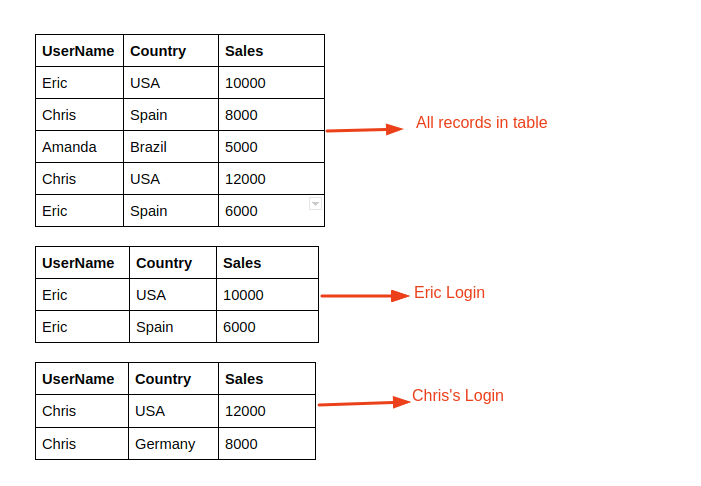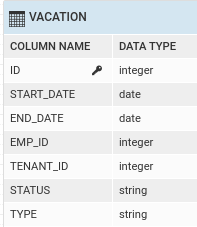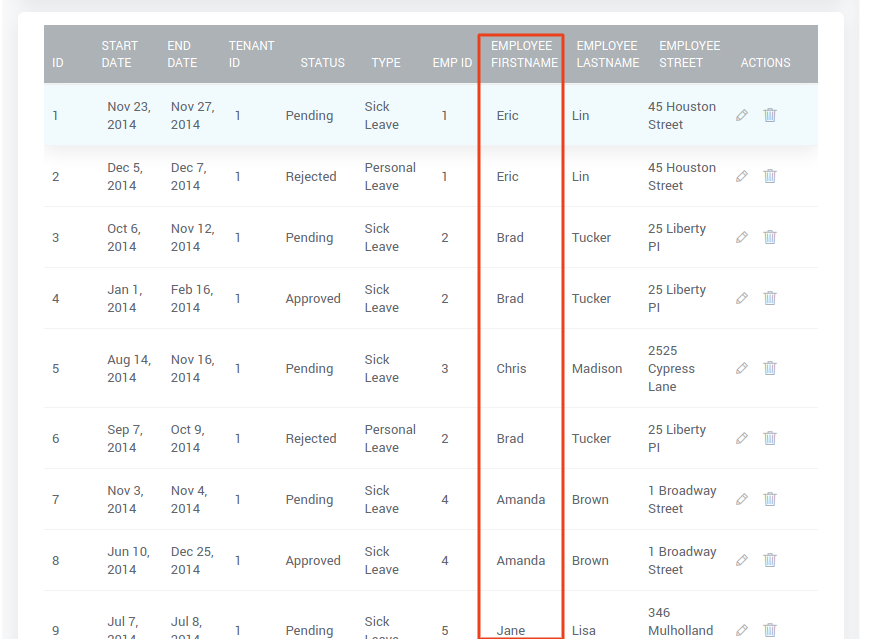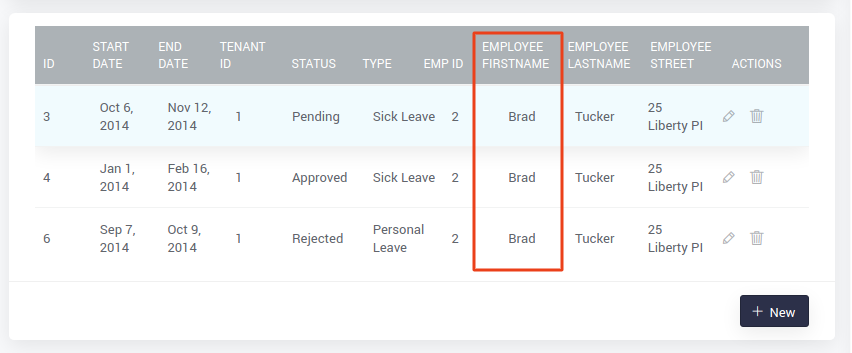Row-Level Security: Display Table Contents using CRUD Listeners
Overview
In this document, learn how to use DB CRUD Listeners for applying Row-Level Security checks to DB table.
As the name suggests, Row-Level Security is a security mechanism that restricts the records from a table based on the authorization context of the current user that is logged in. Therefore, the records are displayed based on the user, allowing only those records that the user has access to. It is usually done to allow specific users to access only their data and restrict them from viewing other users’ data.
- Row-Level Security Illustration.

The WaveMaker runtime framework publishes pre and post fetch list events for fetching before and after the list of records from the database table. In the following example, we use the pre-fetch-list event to fetch the vacation records based on their user roles.
When an admin is logged in to the application, the admin can view and filter all the employee vacation details. When a user logs in, he can only view his own vacation details.
For this, we use the HRDB Vacation table to demonstrate.

Configure an HRDB database in the project from WaveMaker sample databases.
Goals
- Apply the Row-Level security mechanism that restricts the records from a table based on the authorization context of the current user, that is, logged-in user role.
Create a Java Service
Create a Java Service in the project and add the PreFetchListEvent event listener for the vacation entity, as shown below.
- The
beforeVacationFetchmethod gets invoked before fetching the list of records from the vacation table. - You can fetch the logged-in user details from the security service.
- You can fetch query string used for filtering the entities using the PreFetchEvent getFetchQuery() method. For example,
entityPreFetchEvent.getFetchQuery(). - You can set the query string for filtering the entities with authorization checks. For example,
entityPreCreateEvent.setQuery().
In the following lines of code, we perform the logged-in user role checks and set the query to filter the entities based on the user roles.
Create a Live Form
- Drag and drop a Live Filter widget.
- Bind the Live Form to the Vacation CRUD variable.
- Drag and drop a Data Table and bind live filter widget result. For more information, see Working with Live Filter.
Preview the Application
- Log in to an admin role. The vacation Data Table will fetch all the users' vacations.

As shown in the image above, the admin can view and manage all the employees' vacation records.
- Log in as a user. You observe vacation Data Table will fetch only the logged-user records.

As shown in the image above, the user can filter only his records.
Similarly, you can enable row-level security that restricts before CRUD (create, update, and delete) operations on the table using PreCreate, PreUpdate, and PreDelete Event listeners.
See Also
How to set validations using CRUD Listeners
How to audit History using CRUD Listeners
How to write custom business logic using CRUD Listeners